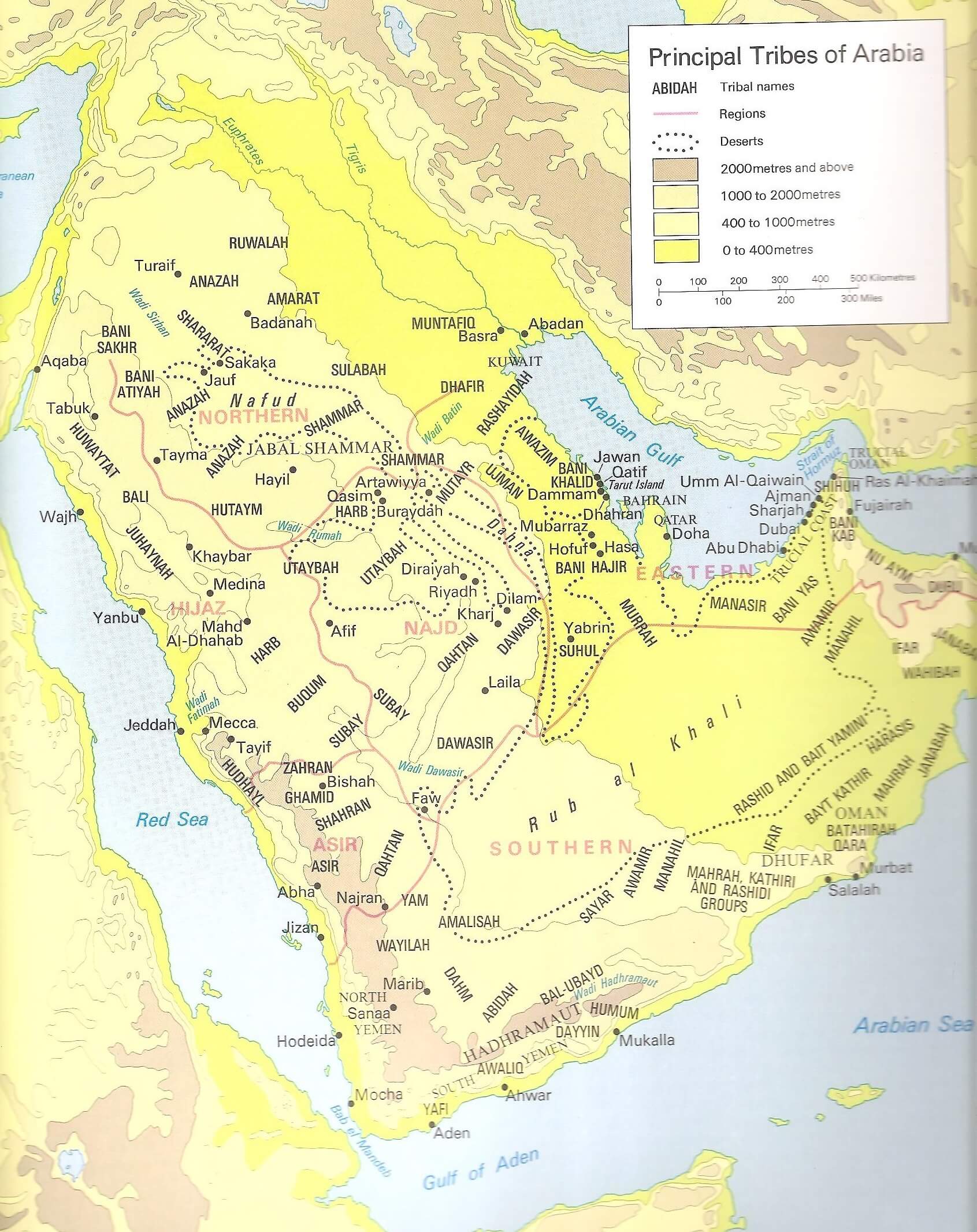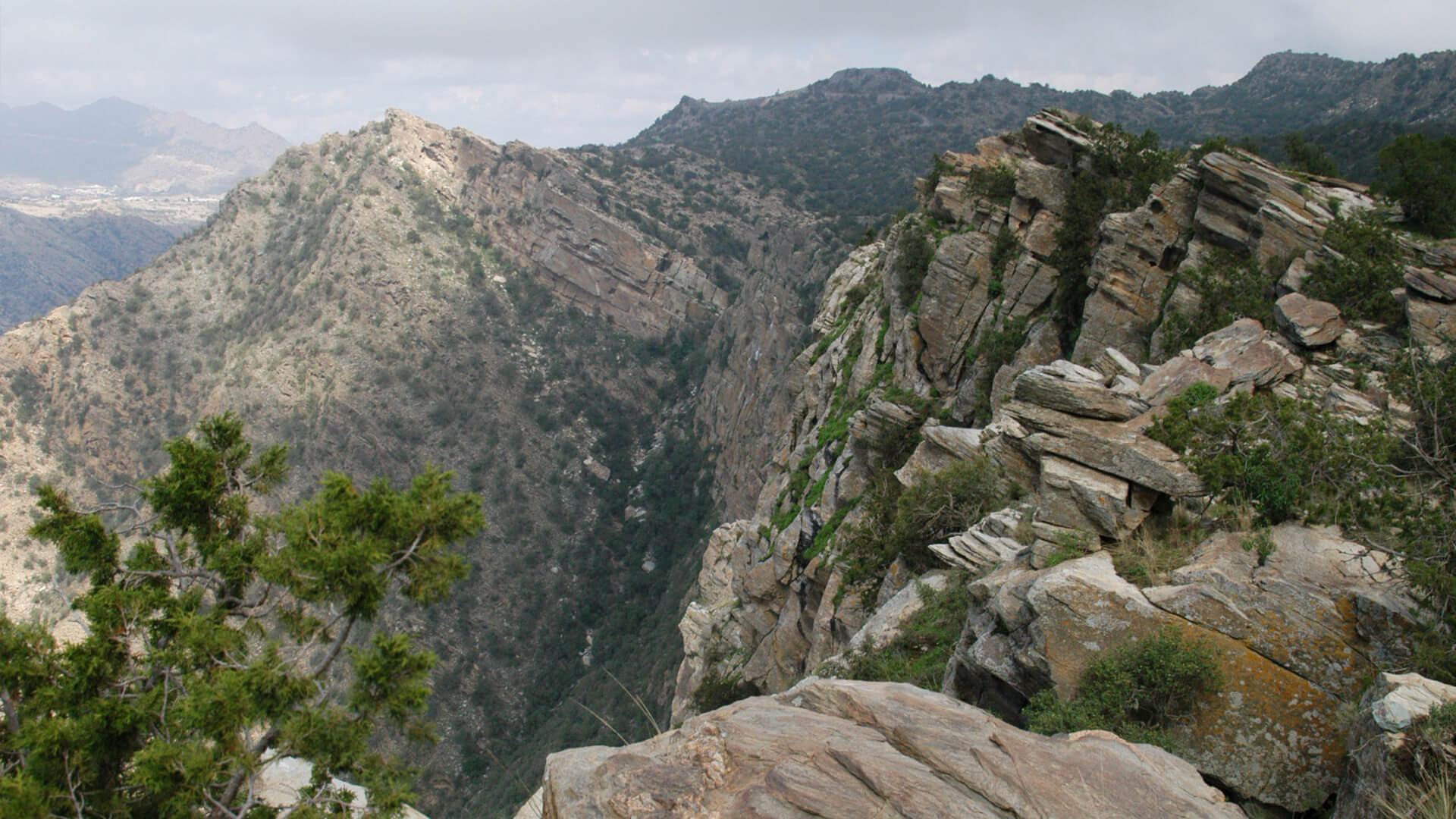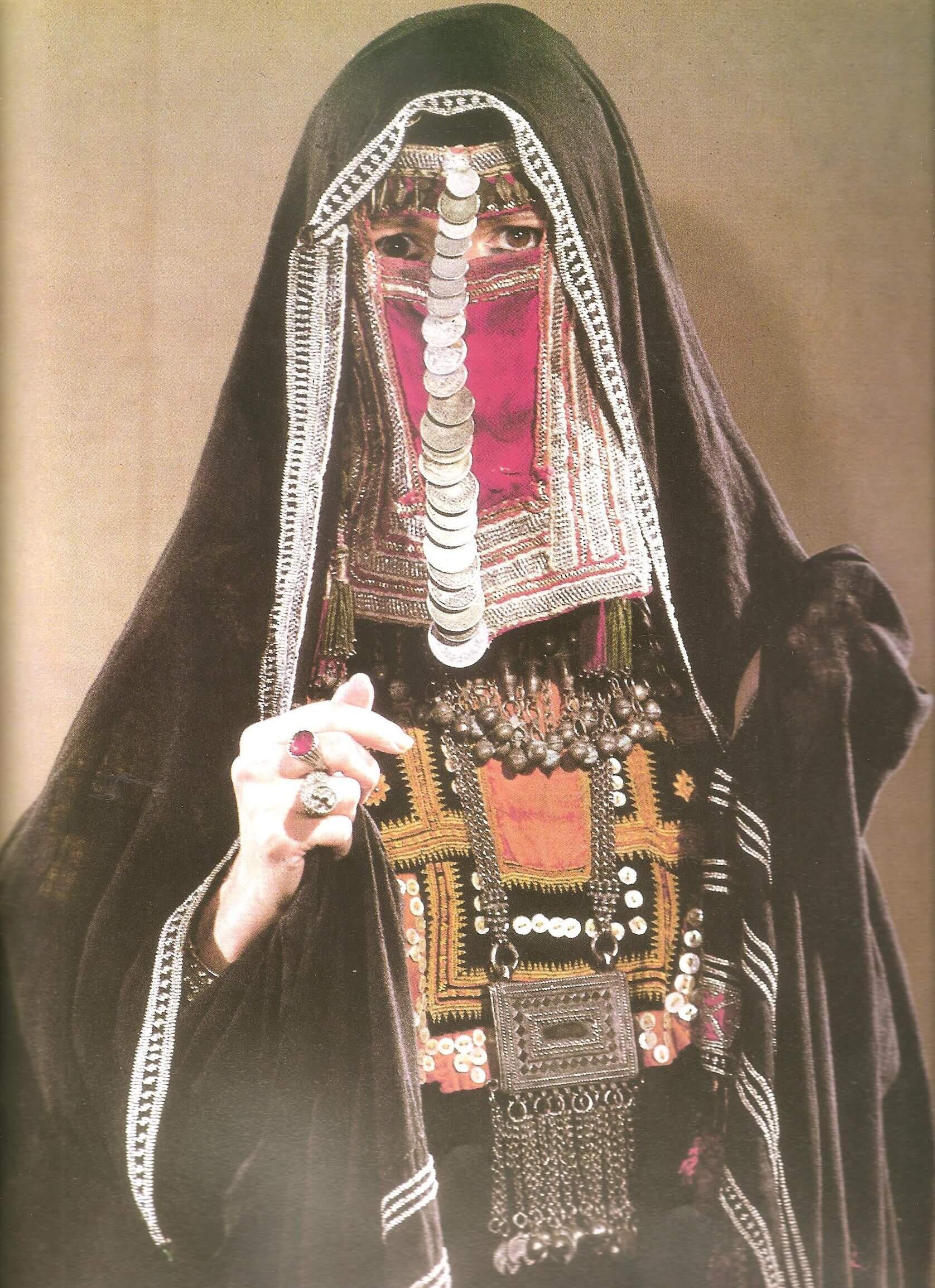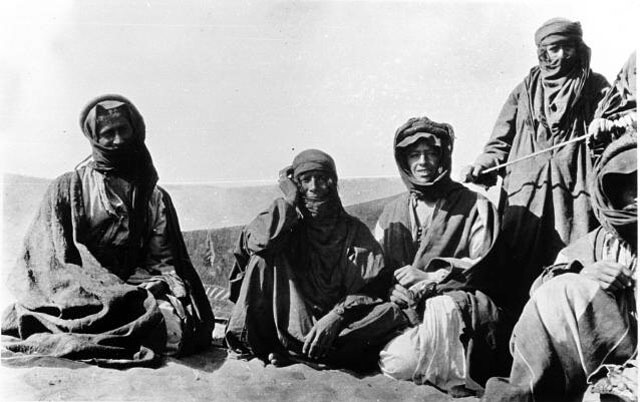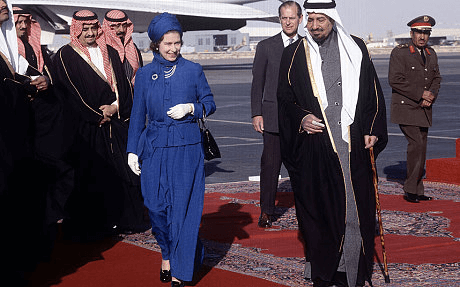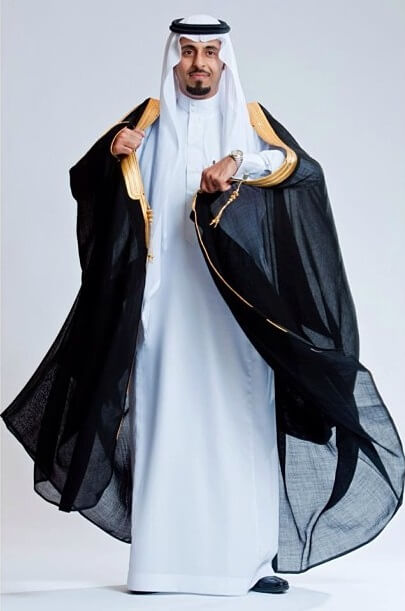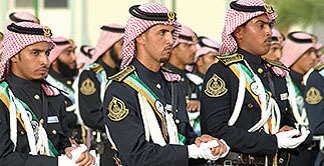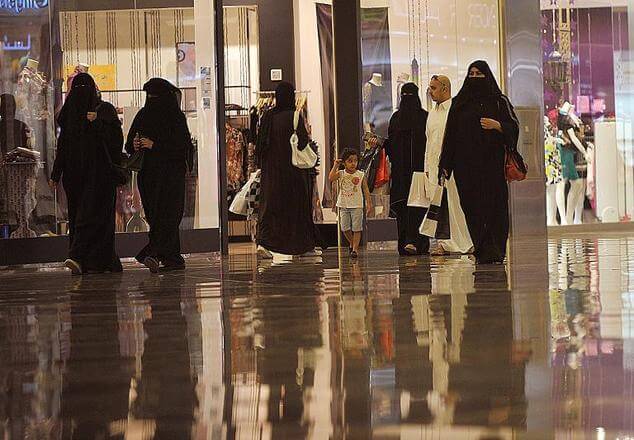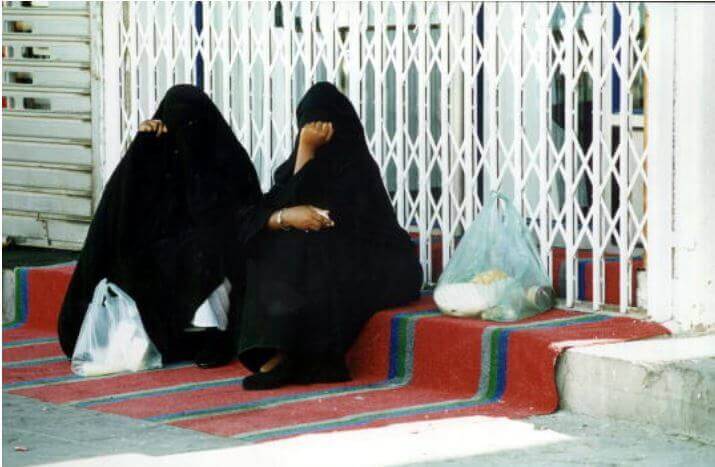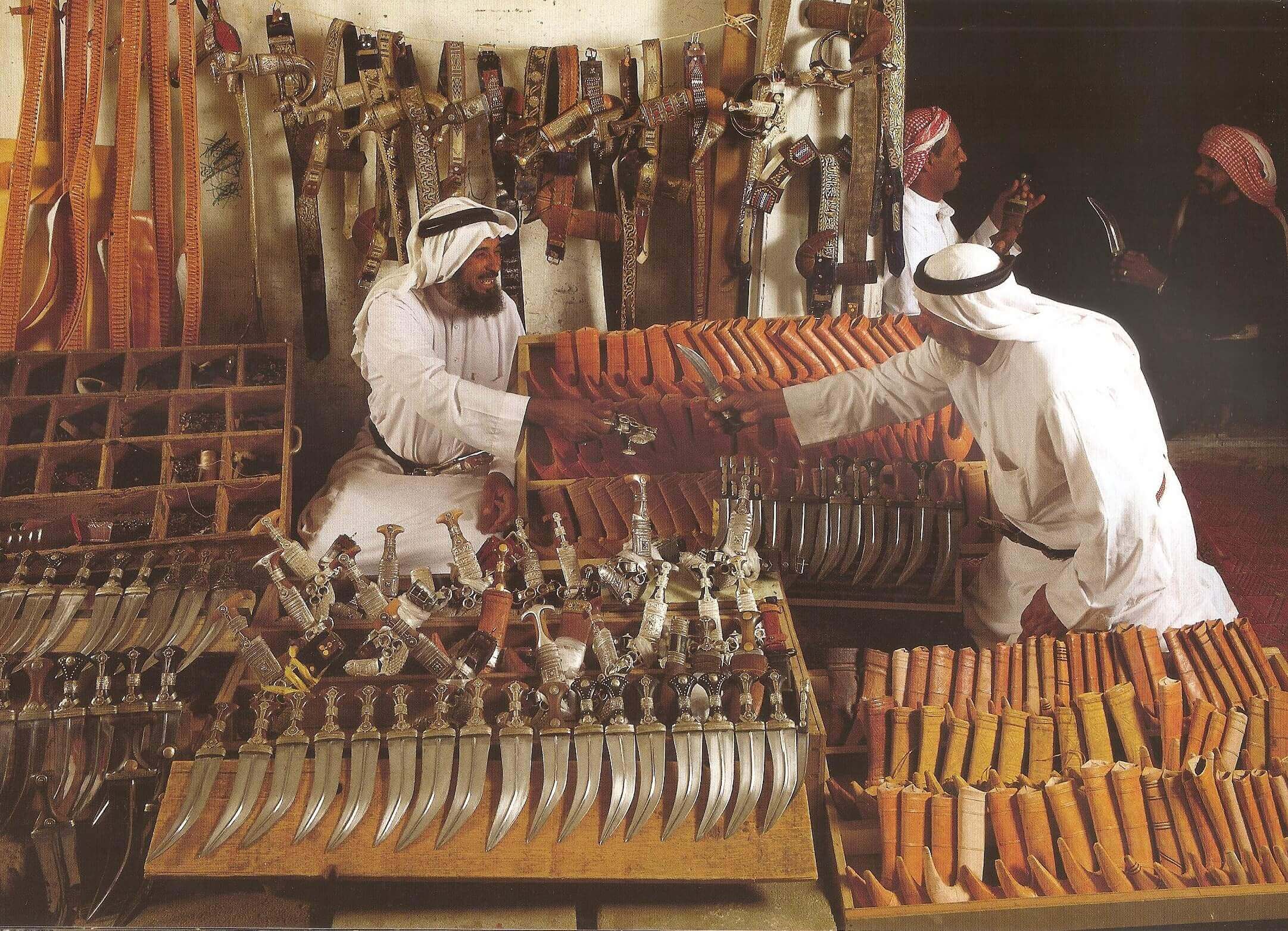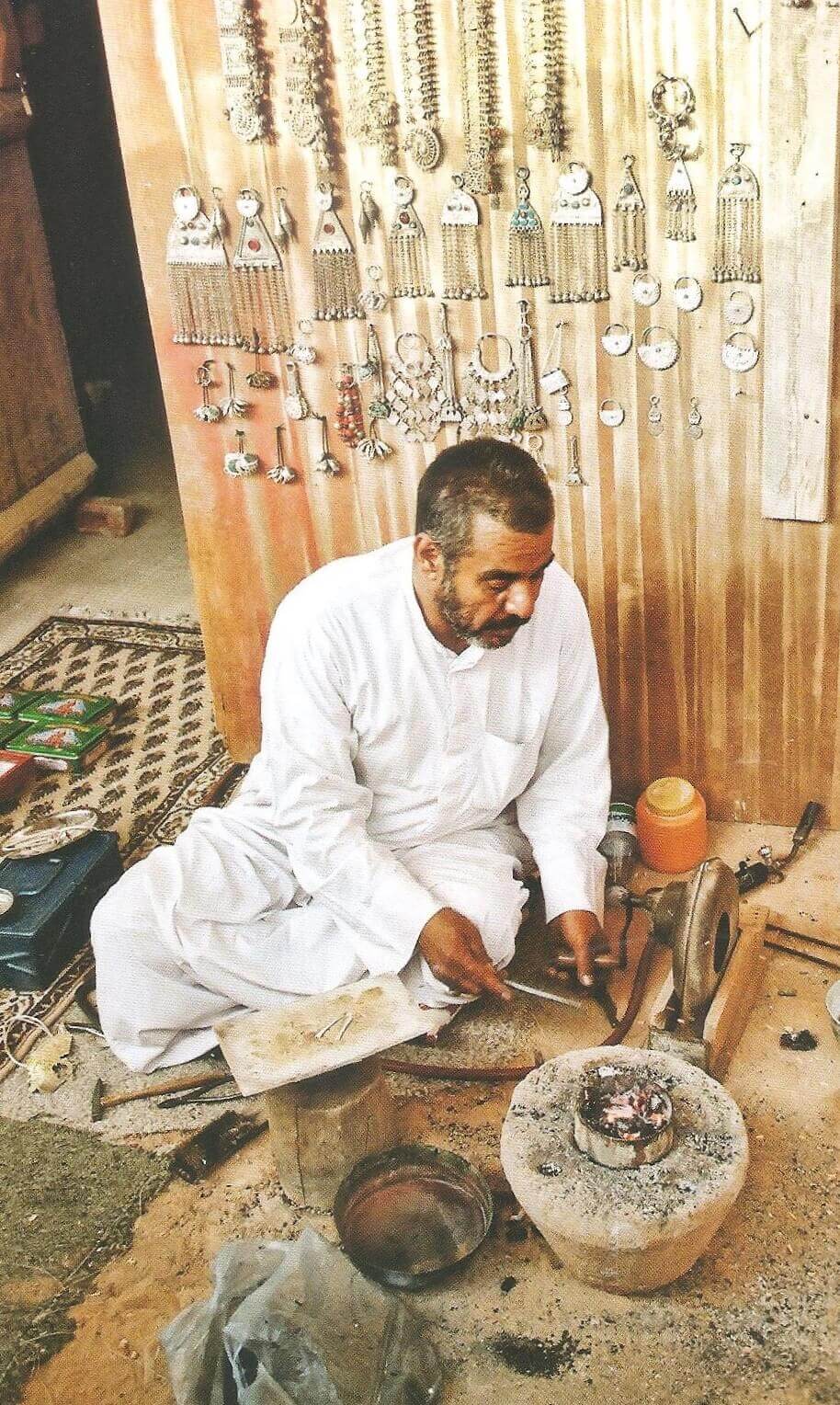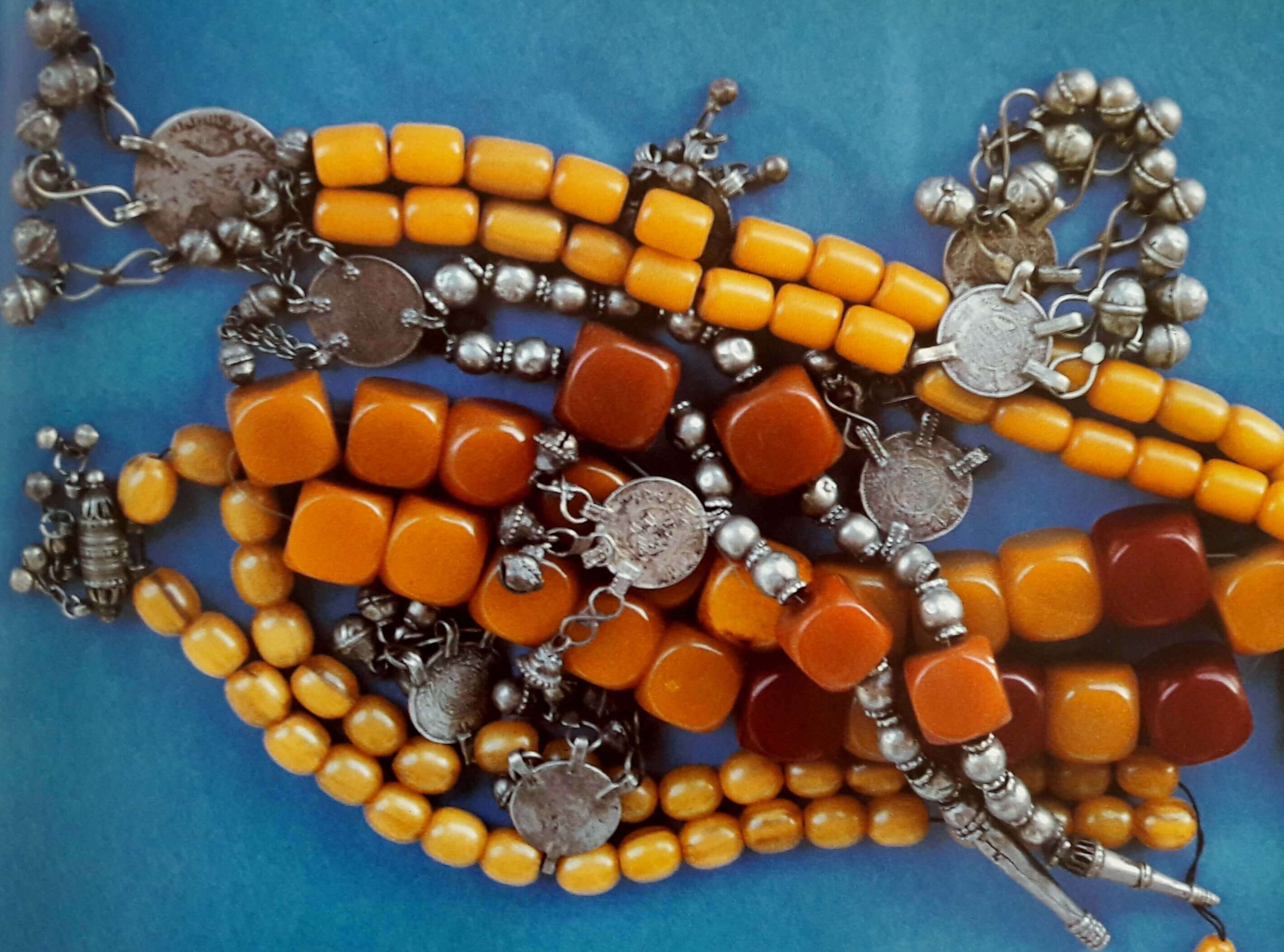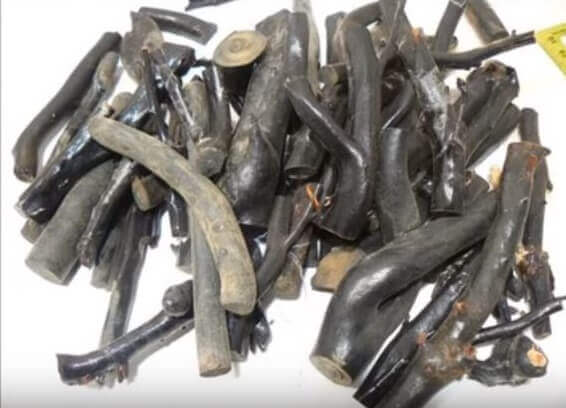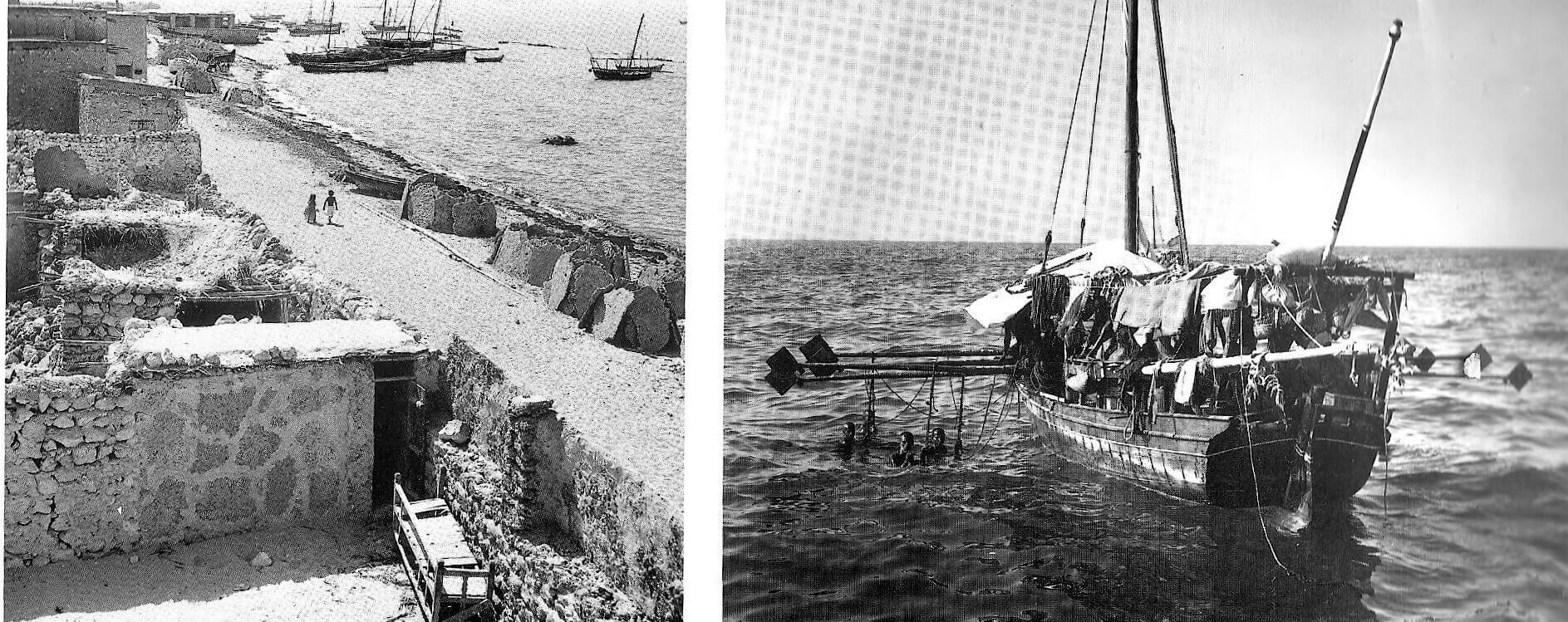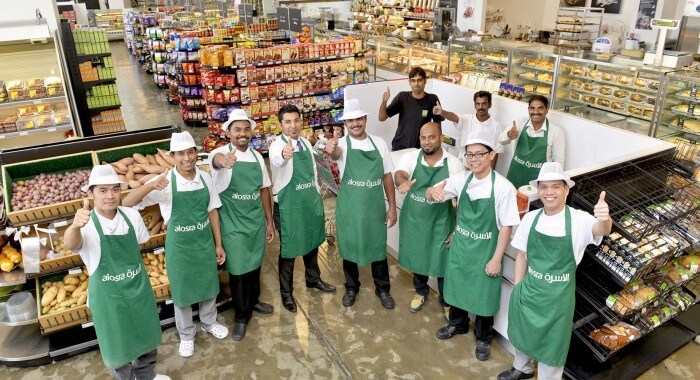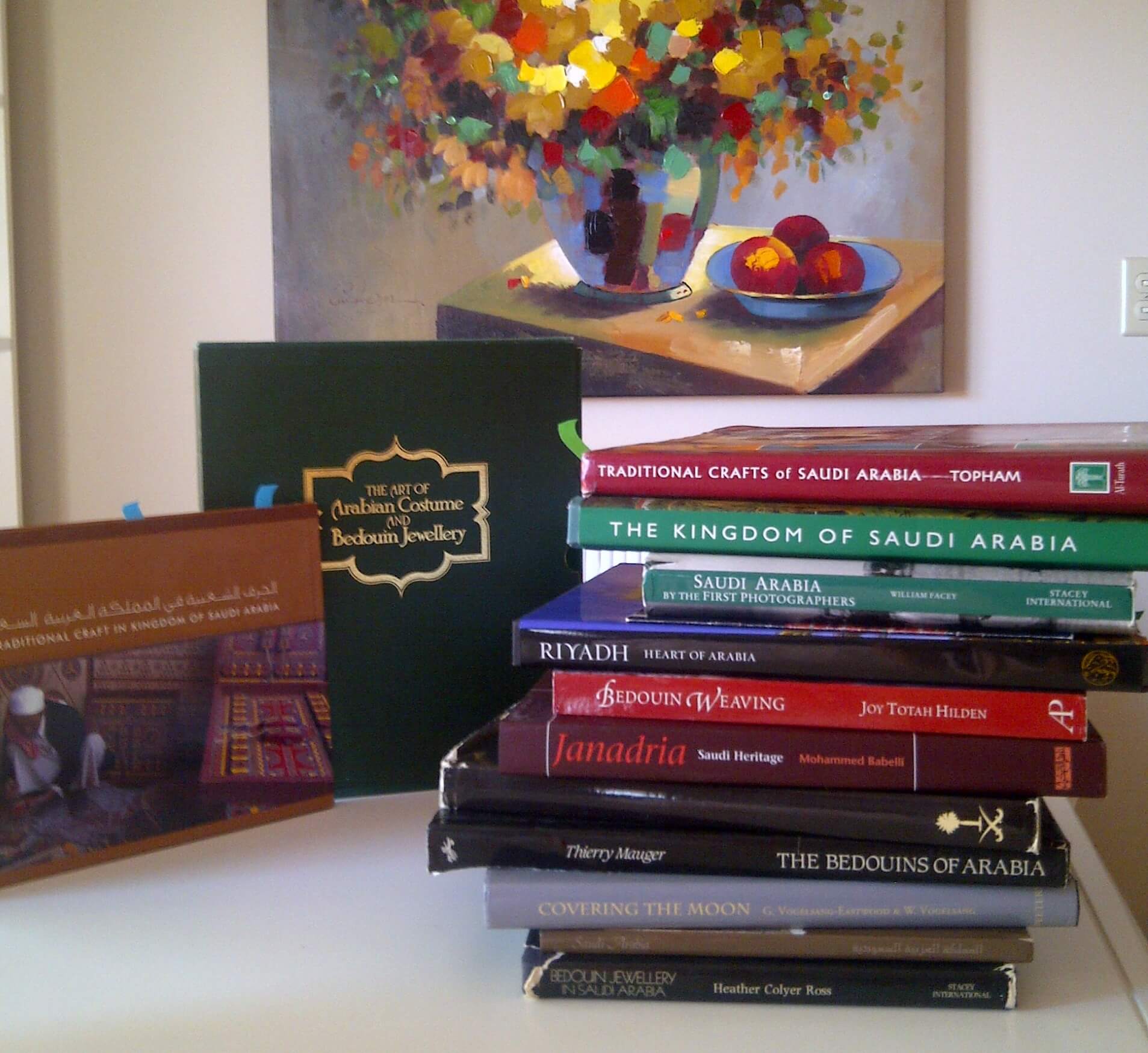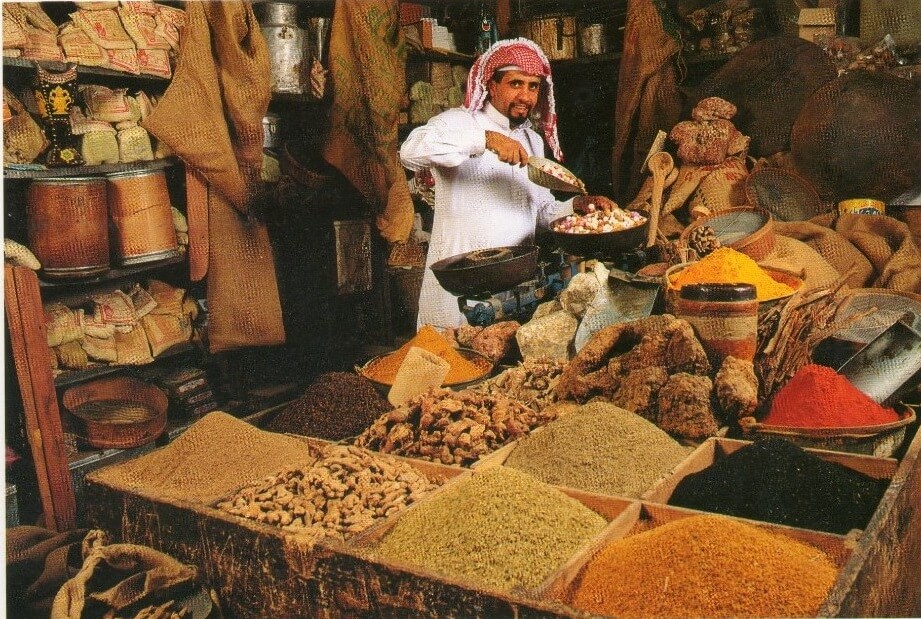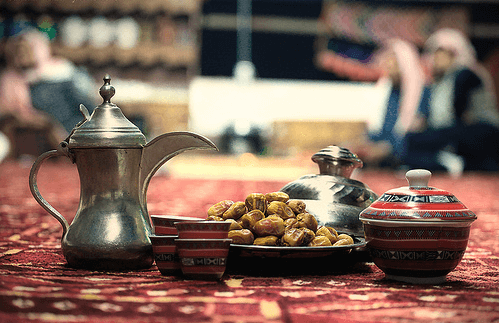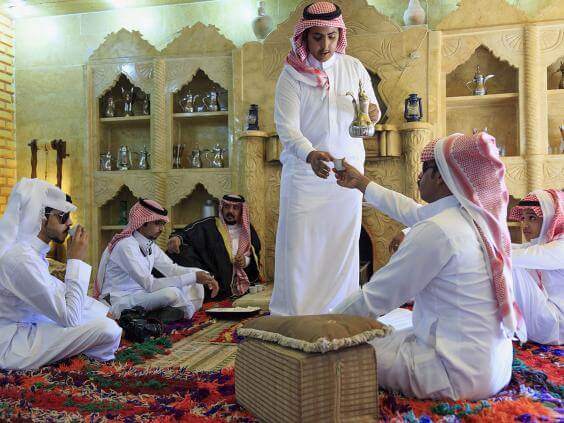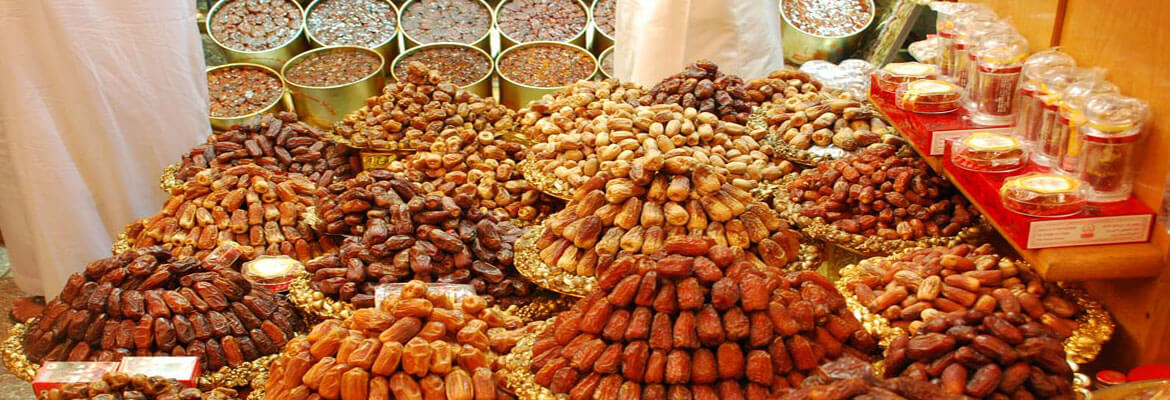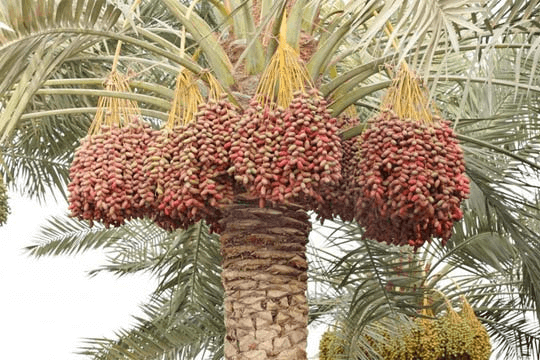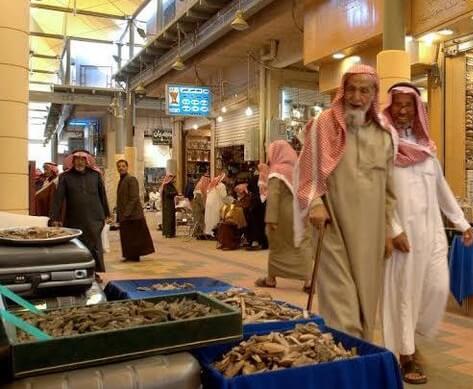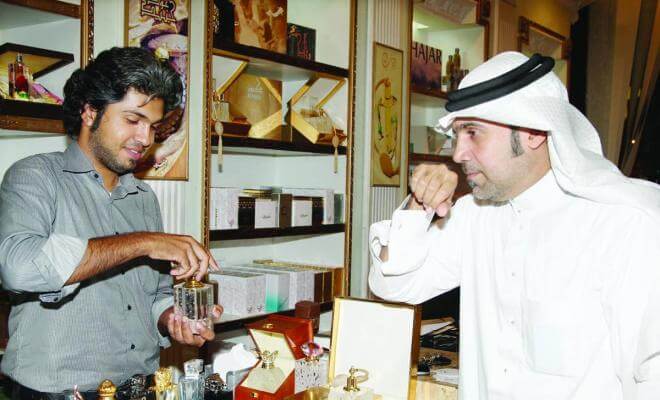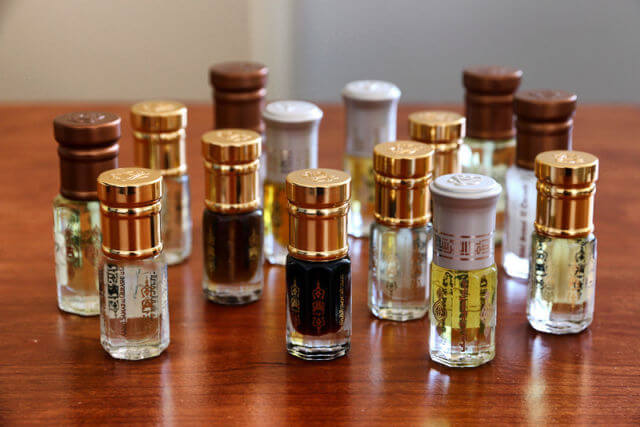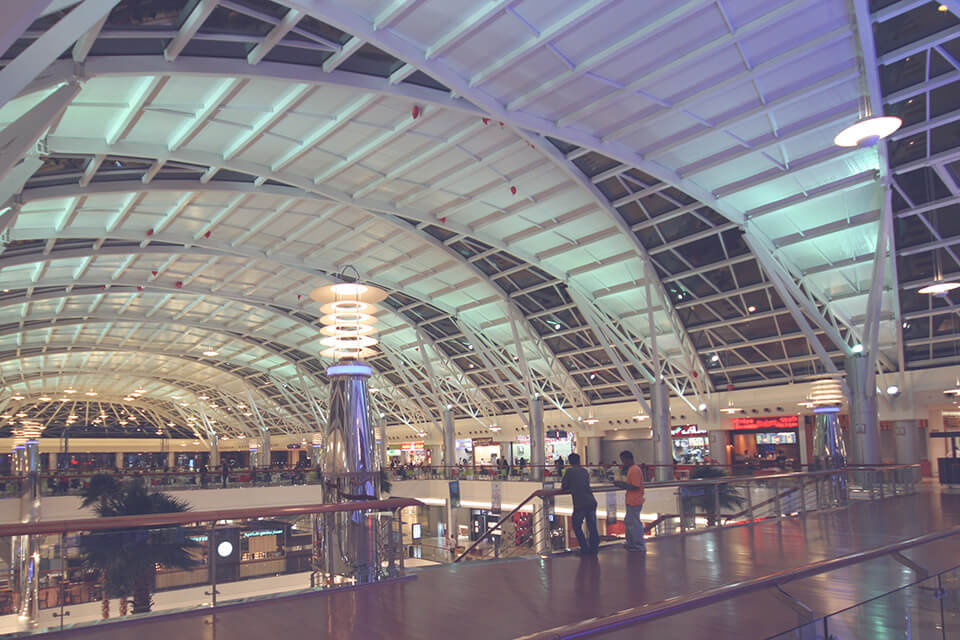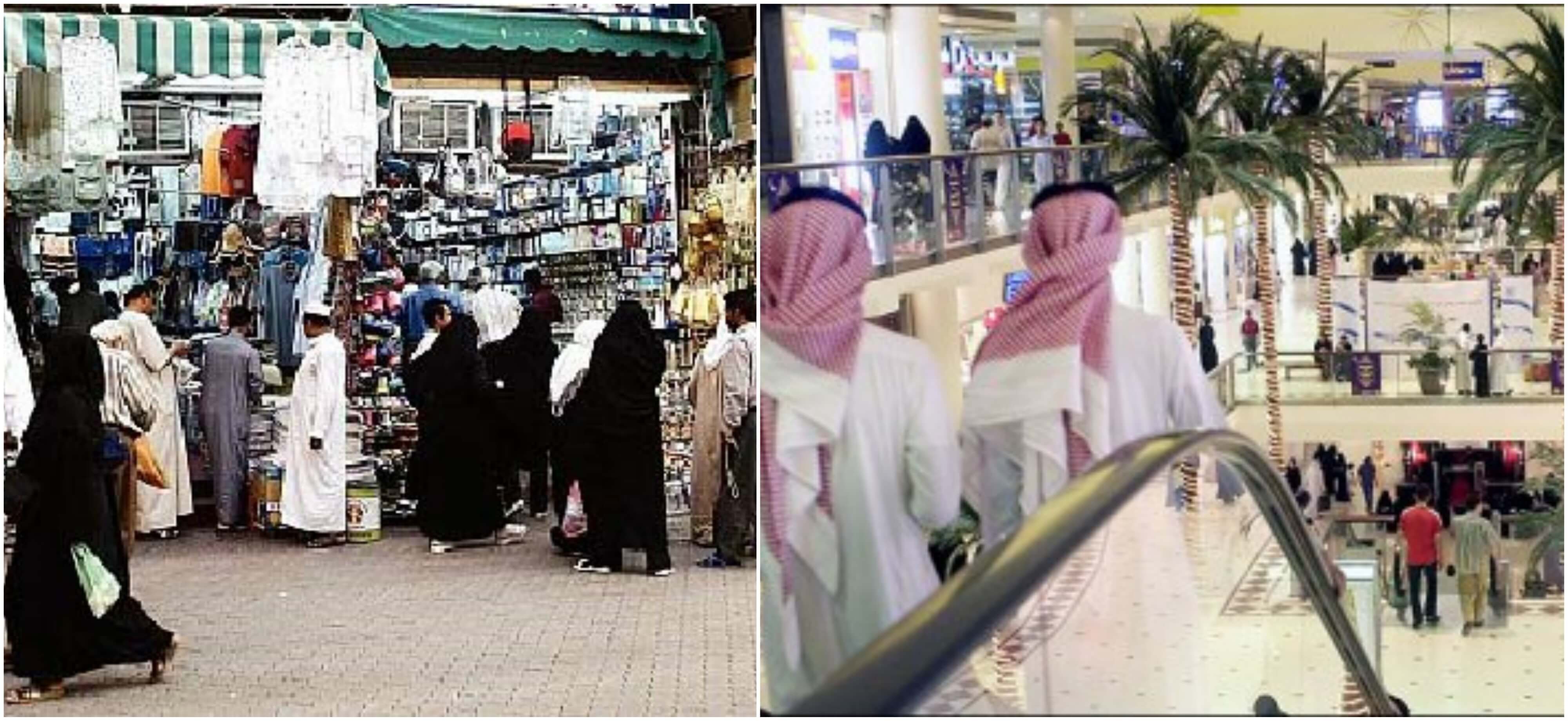Outdoor traditional dress of a woman from Hijaz, Saudi Arabia
A rock barrier formed by great escarpment rises from the north of Saudi Arabia, embraces the cities of Makkah, Taif and Medina, running parallel to the Red Sea coast to the south of the Kingdom as far as Yemen, and forms a natural corridor. It gives the name to the area of Western Arabia called Hijaz, which means “barrier”.
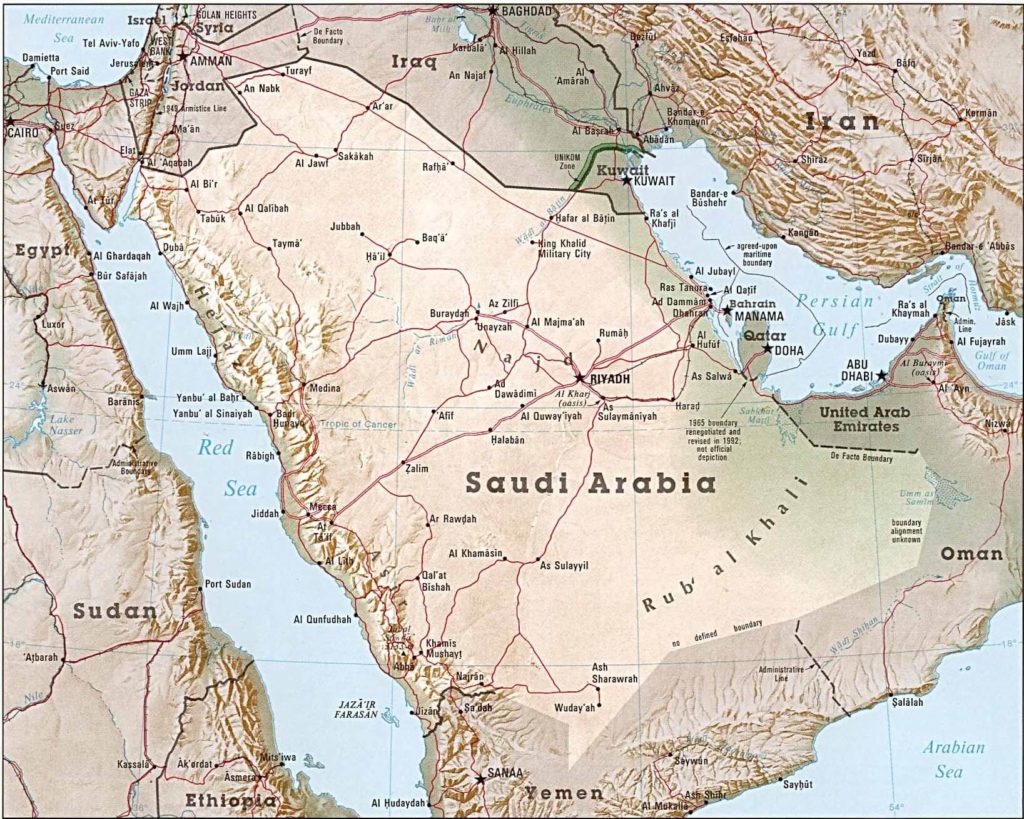
The map of Saudi Arabia
The area was historically a homeland to both nomadic and settled communities, however the urban centers of Hijaz, the Islamic Holy cities of Makkah and Madina, along with the international sea ports Jeddah and Yanbu, have advanced in development since many centuries ago.
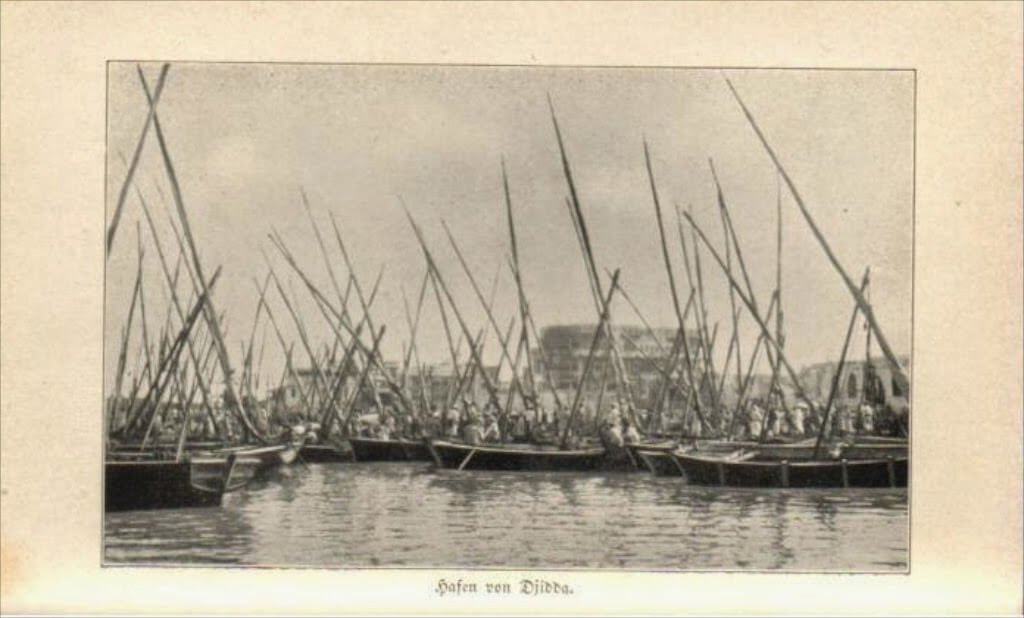
Old port of Jeddah, photo taken in the 1925-26
Image source: Zwischen dem Teufel und dem Roten Meer. Fahrten und Abenteuer in Westarabien book by Dr. Wolfgang von Weisl
Cosmopolitan Hijaz had international reputation for being a trade and cultural center. The merchants of Jeddah dealt with Indian cashmere and fine muslin, Turkish and French textile, Indonesian silk and satin, indigo-dyed Egyptian cotton and wool. Since the women of urban regions of Hijaz could pick the very finest textiles on offer, they developed a sophisticated manner of wearing their traditional attire.
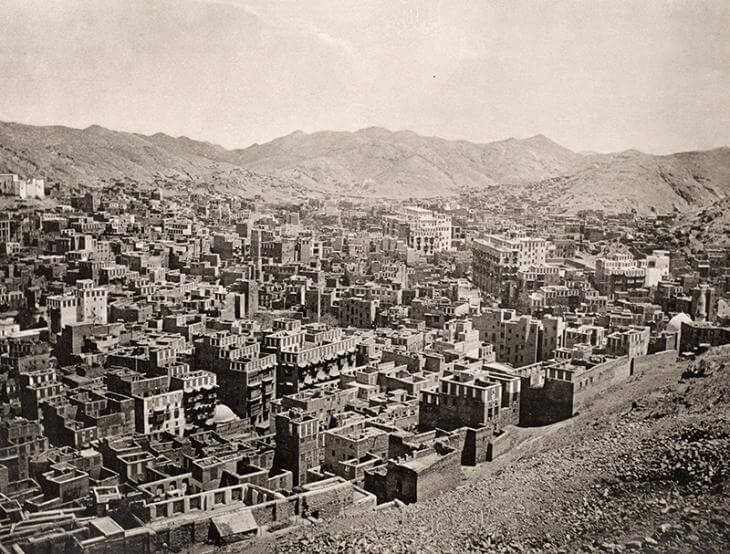
‘Vierte Ansicht der Stadt Mekka’ [Fourth view of the city of Mecca]. Photographer: al-Sayyid ʻAbd al-Ghaffār, 1886-89
The English traveler and lieutenant of the East India Company Marine Services, J.R.Wellsted, who was part of an expedition sent to explore the shores of the Arabian Peninsula in the 1930s, wrote in his diary that the women of Jeddah “envelop their persons in a loose wrapper of blue cotton, which, covering the head and shoulders, extend down to the feet”. Likewise in Medina, Sir Richard Burton, the English Arabist, who visited the city in 1853, noticed that local women “throw over the head a silk or cotton milayah generally chequered white and blue. The burka (face veil), all over Al-Hijaz is white”.
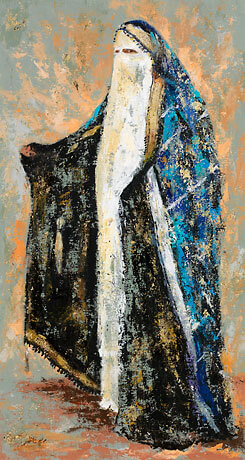
Beautiful painting of Hijazi woman
Image source: I unfortunately forgot who the artist of this beautiful painting is. I found out that it was exhibited in the ‘Arabia 3D’, in London, May 2010. It was an exhibition preceding the documentary shot about Saudi Arabia. Please send me a note if you happen to know the name of the artist (or visited the exhibition)!

Outdoor attire of Hijaz townswoman
Indeed, when in public, Hijazi townswomen covered themselves with “burka milayah”, a head covering veil, sometimes referred to as the “Makkah veil”. It was a long heavily starched white fine linen or cotton veil. In the National Museum of Ethnology in Leiden, the Netherlands, there is an example of a Hijaz burka dated late 19th century. It is 166cm long, which means when worn it would reach the hemline, and 32cm wide. The headband has a button and a loop, to hold the veil in place. When the woman was visiting other houses, she would throw the long burka tail over her head to uncover the face. More sophisticated burkas would be richly embroidered from both sides, so the ornament would be seen when thrown back.
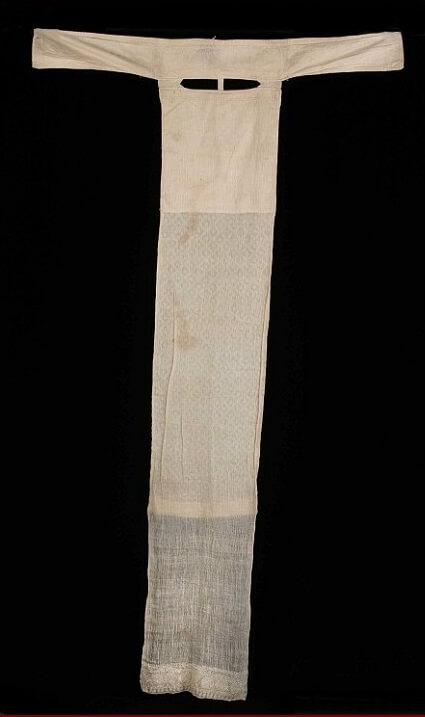
Sample of burka milayah, found in the collection of the National Museum of Ethnology in Leiden, the Netherlands
More samples of Makkan burka (have you noticed the length of it?)
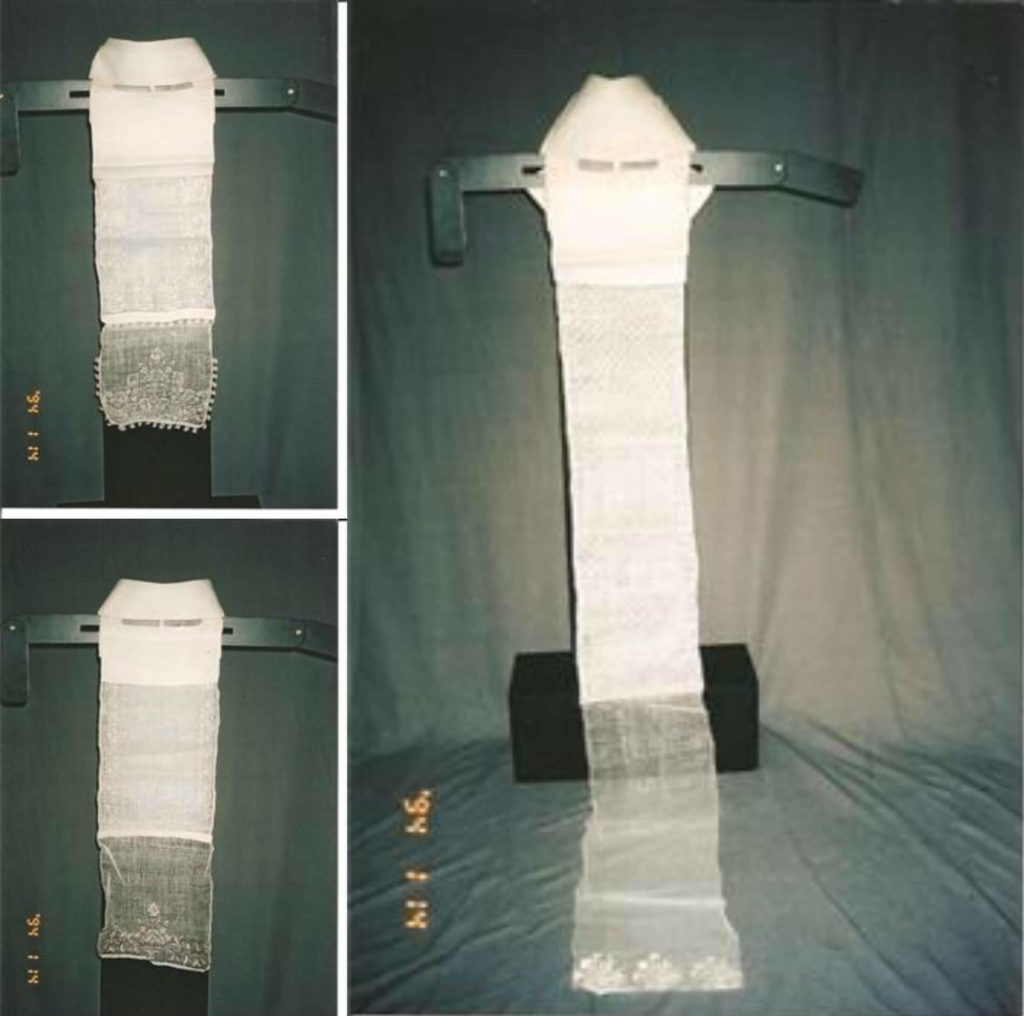
White gauze burka milayah with beautiful embroidery
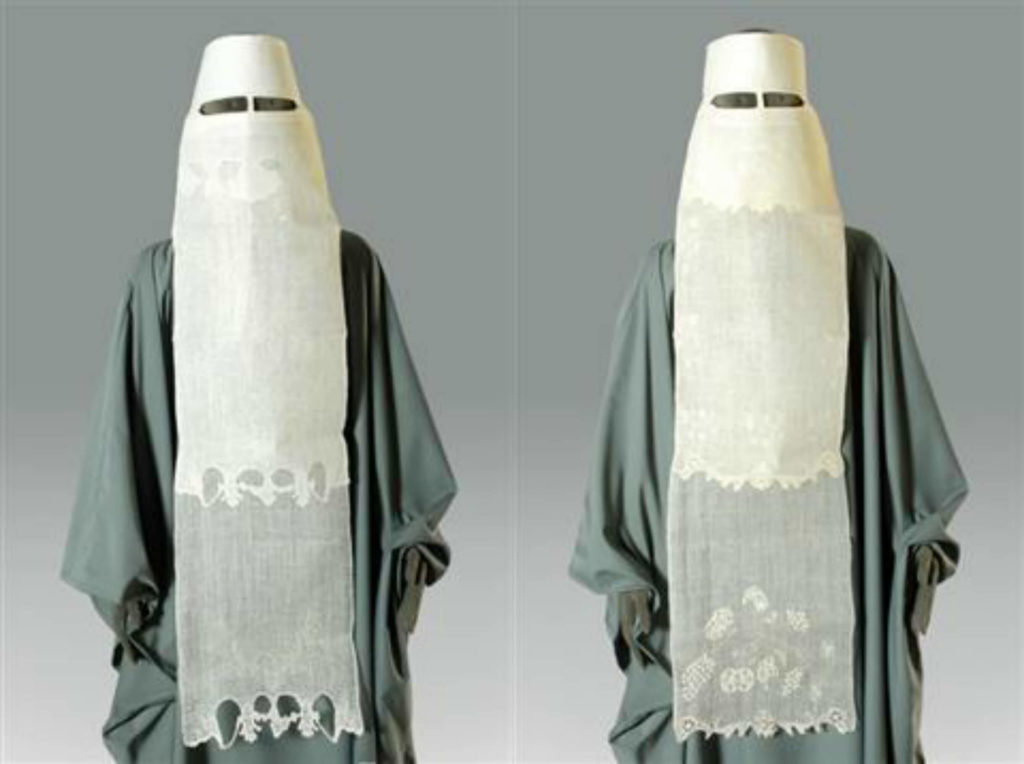
Various types of embroidery on Hijaz burka
Along with the burka, when leaving home Hijazi women wore a heavy mantle, made of expensive Indonesian silk taffeta of navy-blue or gray color. It would be decorated with braids and tassels, and embroidered with silver metal thread.
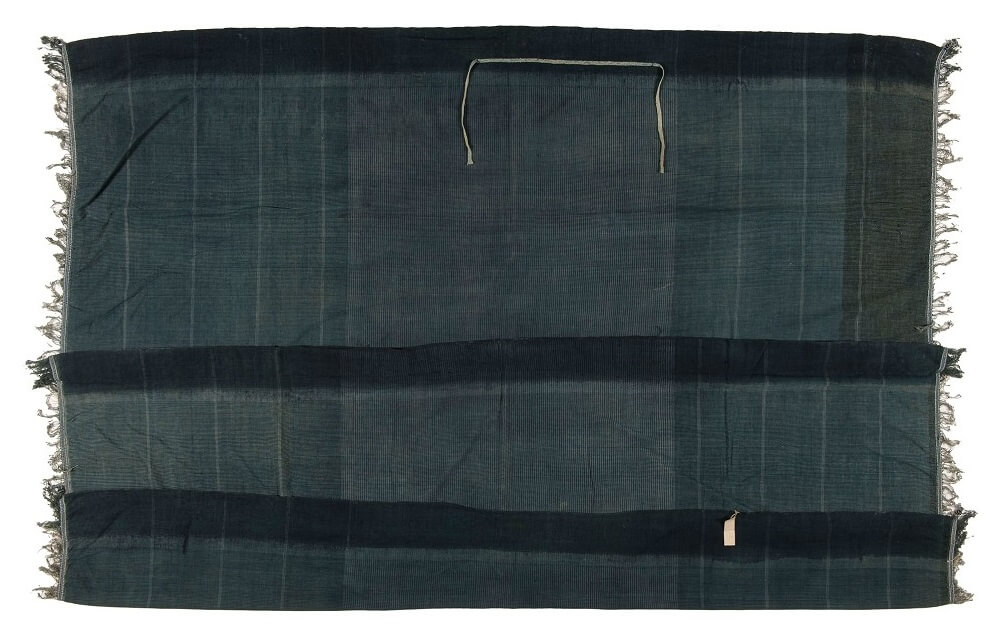
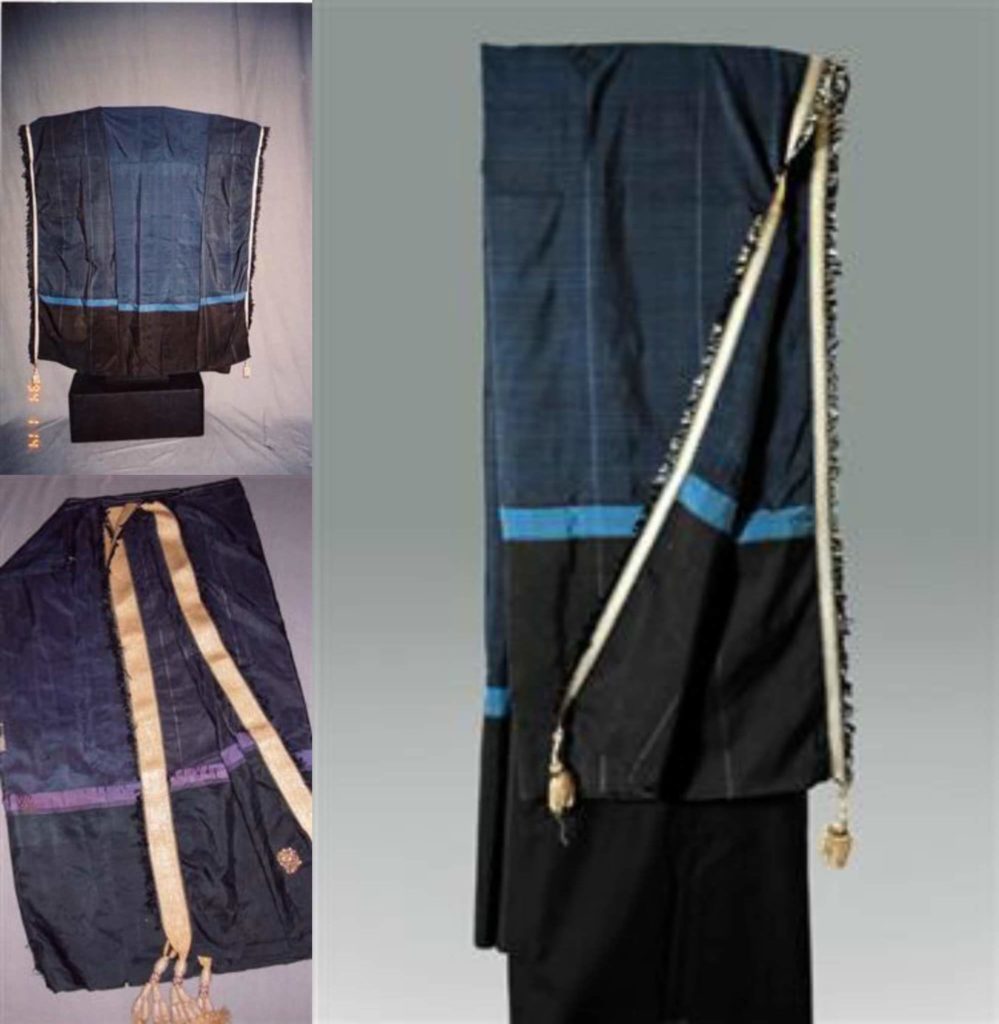
More different styles of the outdoor mantle worn by Hijaz townswomen
The Dutch Orientalist, Christian Snouck Hurgronje, published in the album “Bilder aus Mekka (1889)” a picture taken by Siegfried Langer, depicting two Hijaz women, one is wearing her outdoor attire.
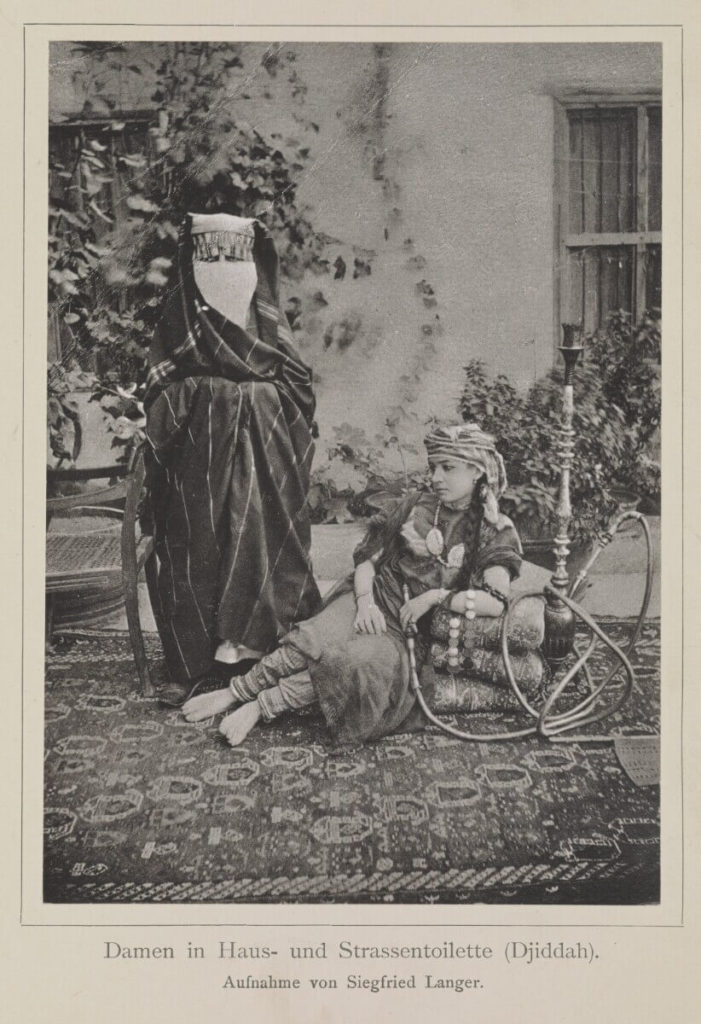
“Ladies in domestic and street attire (Djiddah)” by Siegfried Langer
He also sent various household objects and garments from Makkah, Medina and Jeddah to the Leiden University and museum in the Netherlands, where they are exhibited now. A total of 160 objects collection consists mainly of objects illustrating daily life in Jeddah and Mecca around 1885: coffee pots and tea cups, weapons, textiles, clothing and footwear, personal care items, musical instruments, etc. You can go through the photographs of the collection on the museums’ website. The museum plans to publish a book about this collection by October, 2016.
The French photographer, Jules Gervais-Courtellemont published an album “Mon Voyage a la Mecque” in 1896, where among general street scenes from Medina there is a woman in outdoor dress.
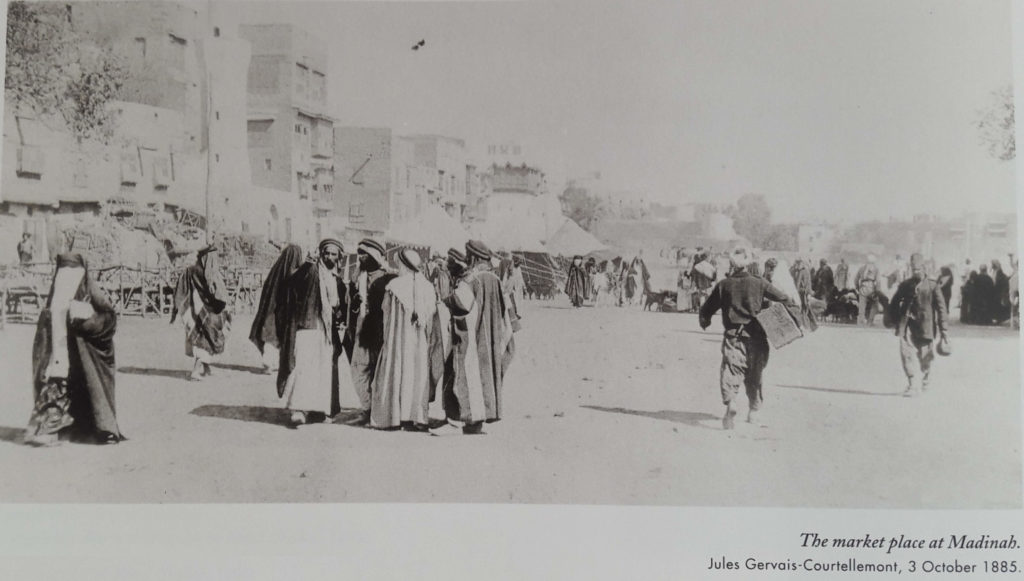
Woman from Medina wearing her outdoor mantle and burka (from the left)
Image source Saudi Arabia Caught in Time, 1861-1939 book by Badr El-Hage Sébah, Pascal, 1823-1886, has a series of studio portraits from his travels, where one of the photographs depicts a woman wearing traditional clothing from the province of Hedjaz (Hejaz), and described as “married Muslim woman of Mekkè” (she is from the left side):
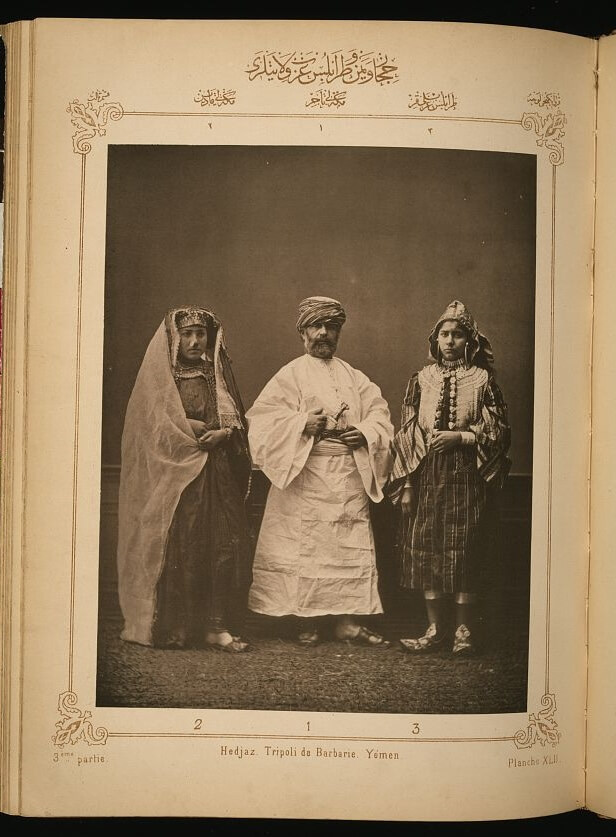
Woman from Hijaz
In the accompanying booklet of the exhibition “Palms and Pomegranates: Traditional Dress of Saudi Arabia”, held in Washington DC in 1987, there is a photo of an urban Hijaz dress. Although the date was not indicated, it is likely to be early to mid-twentieth century.
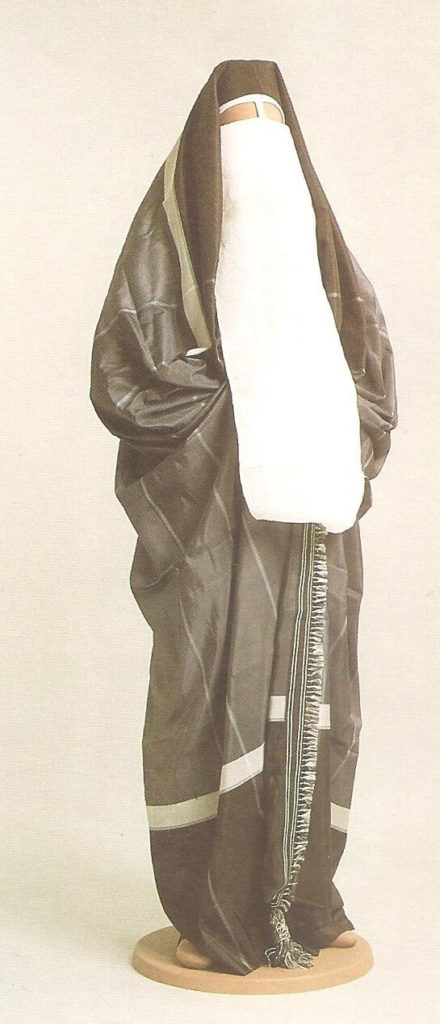
Hijaz outdoor dress
Image source Palms and Pomegranates: Traditional Dress of Saudi Arabia booklet by the US Committee for Saudi Arabian Cultural Heritage
Leather slippers completed the outdoor attire. They would be made of gazelle skin and colored in yellow, cream or delicate lemon color. Women would also line the eyes with kohl, and cover their faces with traditional oils.
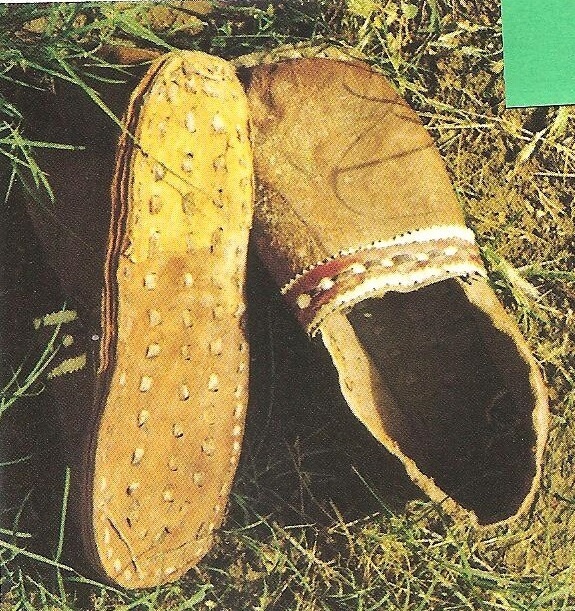
Leather footwear that urban women used to wear in Hijaz area
Image source The Art of Arabian Costume by Heather Colyer Ross
Upper-class townswomen of Hijaz would elegantly wear their multi-layered outdoor attire in the streets of the cities. I can only imagine what it took to maintain those elaborate white starched burkas and huge silk outer covers in the times when no modern technology like washing machine or a simple iron was available!
If you wonder how the festive burka would look like, take a look at this masterpiece:
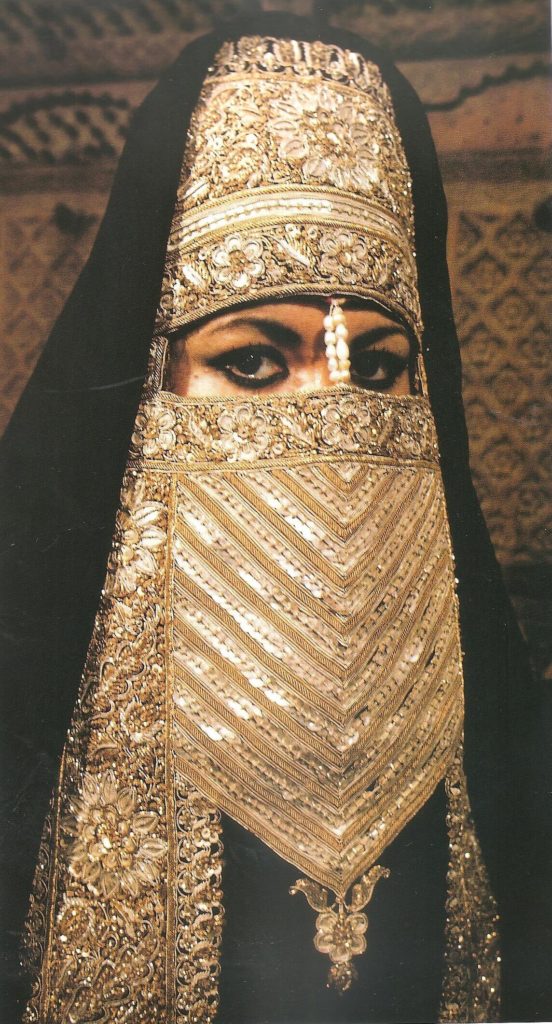
Makkan veil in gold embroidery and pearls, from the last century.
Image source The Kingdom of Saudi Arabia book by Stacey International
If you happen to be in Jeddah, visit the Al Tayebat International City Museum. There is a series of traditional women clothes from different provinces, including the urban outdoor traditional clothing of Hijaz region. The museum is well worth visiting.
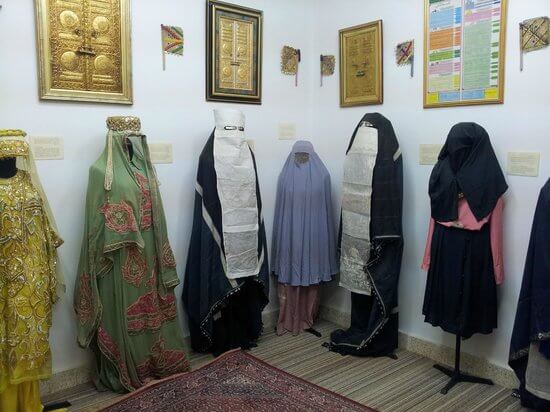
Exhibition of the traditional Saudi costumes in the Al Tayebat International City Museum, two examples of the Hijaz outdoor wear!
This style of dress stopped being in use around the 1950’s.

